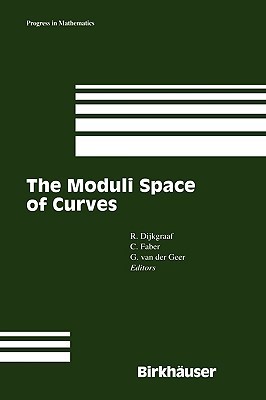
- We will send in 10–14 business days.
- Publisher: Birkhäuser
- ISBN-10: 0817637842
- ISBN-13: 9780817637842
- Format: 15.6 x 23.4 x 3.2 cm, hardcover
- Language: English
- SAVE -10% with code: EXTRA
The Moduli Space of Curves (e-book) (used book) | bookbook.eu
Reviews
Description
This generalization of geometry is bound to have wide- spread repercussions for mathematics as well as physics. The unearthing of it will entail a new golden age in the interaction of mathematics and physics. E. Witten (1986) The idea that the moduli space Mg of curves of fixed genus 9 - that is, the algebraic variety that parametrizes all curves of genus 9 - is an intriguing object in its own right seems to have come slowly. Although the para- meters or moduli of curves surface in Riemann's famous memoir on abelian functions (from 1857) and in work of Hurwitz and later were considered by the geometers of the Italian school, for a long time they attracted attention only in the special case 9 = 1, where they were studied in the framework of the theory of modular functions. The work of Grothendieck, who in the early sixties pointed the way towards the right approach, and the subsequent construction (in 1965) of the moduli space Mg by Mumford were the first foundational work, to be followed by the construction of a compactification Mg by Deligne and Mumford in 1969. The theorem of Harris and Mumford saying that for 9 sufficiently large the space Mg is of general type was the first big insight in its structure.
EXTRA 10 % discount with code: EXTRA
The promotion ends in 19d.22:18:30
The discount code is valid when purchasing from 10 €. Discounts do not stack.
- Publisher: Birkhäuser
- ISBN-10: 0817637842
- ISBN-13: 9780817637842
- Format: 15.6 x 23.4 x 3.2 cm, hardcover
- Language: English English
This generalization of geometry is bound to have wide- spread repercussions for mathematics as well as physics. The unearthing of it will entail a new golden age in the interaction of mathematics and physics. E. Witten (1986) The idea that the moduli space Mg of curves of fixed genus 9 - that is, the algebraic variety that parametrizes all curves of genus 9 - is an intriguing object in its own right seems to have come slowly. Although the para- meters or moduli of curves surface in Riemann's famous memoir on abelian functions (from 1857) and in work of Hurwitz and later were considered by the geometers of the Italian school, for a long time they attracted attention only in the special case 9 = 1, where they were studied in the framework of the theory of modular functions. The work of Grothendieck, who in the early sixties pointed the way towards the right approach, and the subsequent construction (in 1965) of the moduli space Mg by Mumford were the first foundational work, to be followed by the construction of a compactification Mg by Deligne and Mumford in 1969. The theorem of Harris and Mumford saying that for 9 sufficiently large the space Mg is of general type was the first big insight in its structure.


Reviews